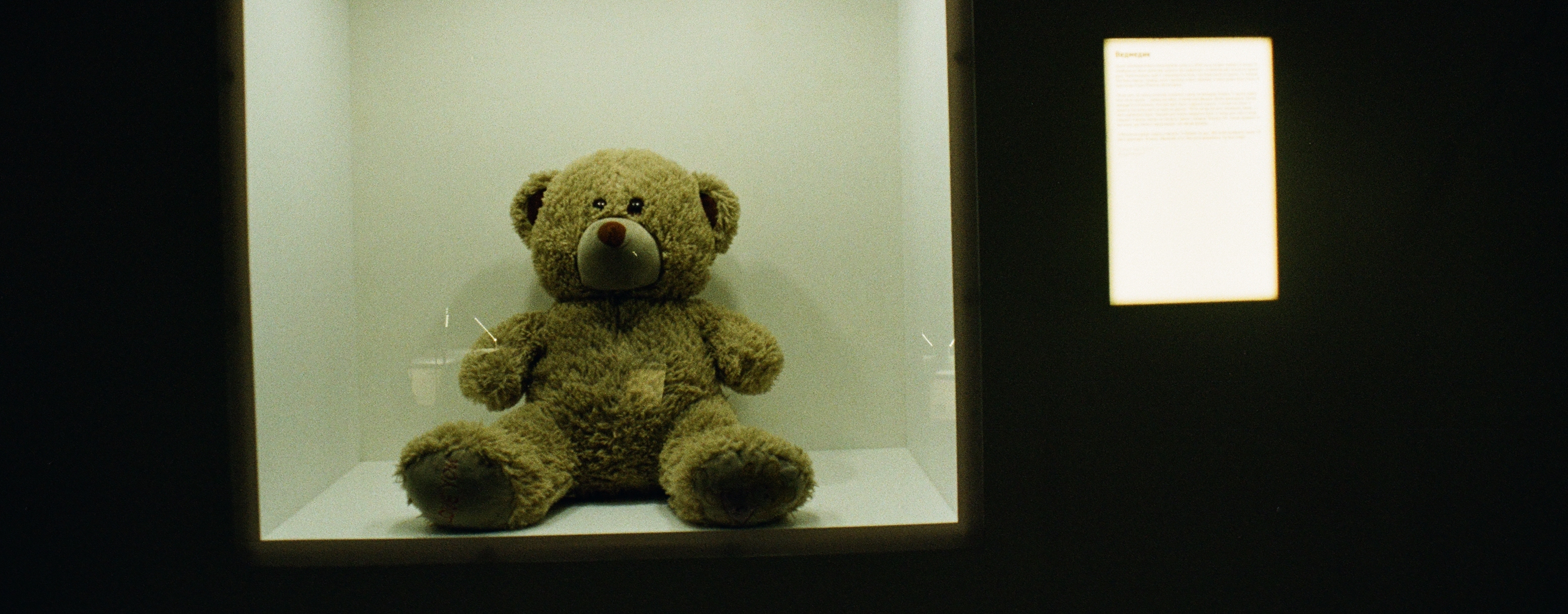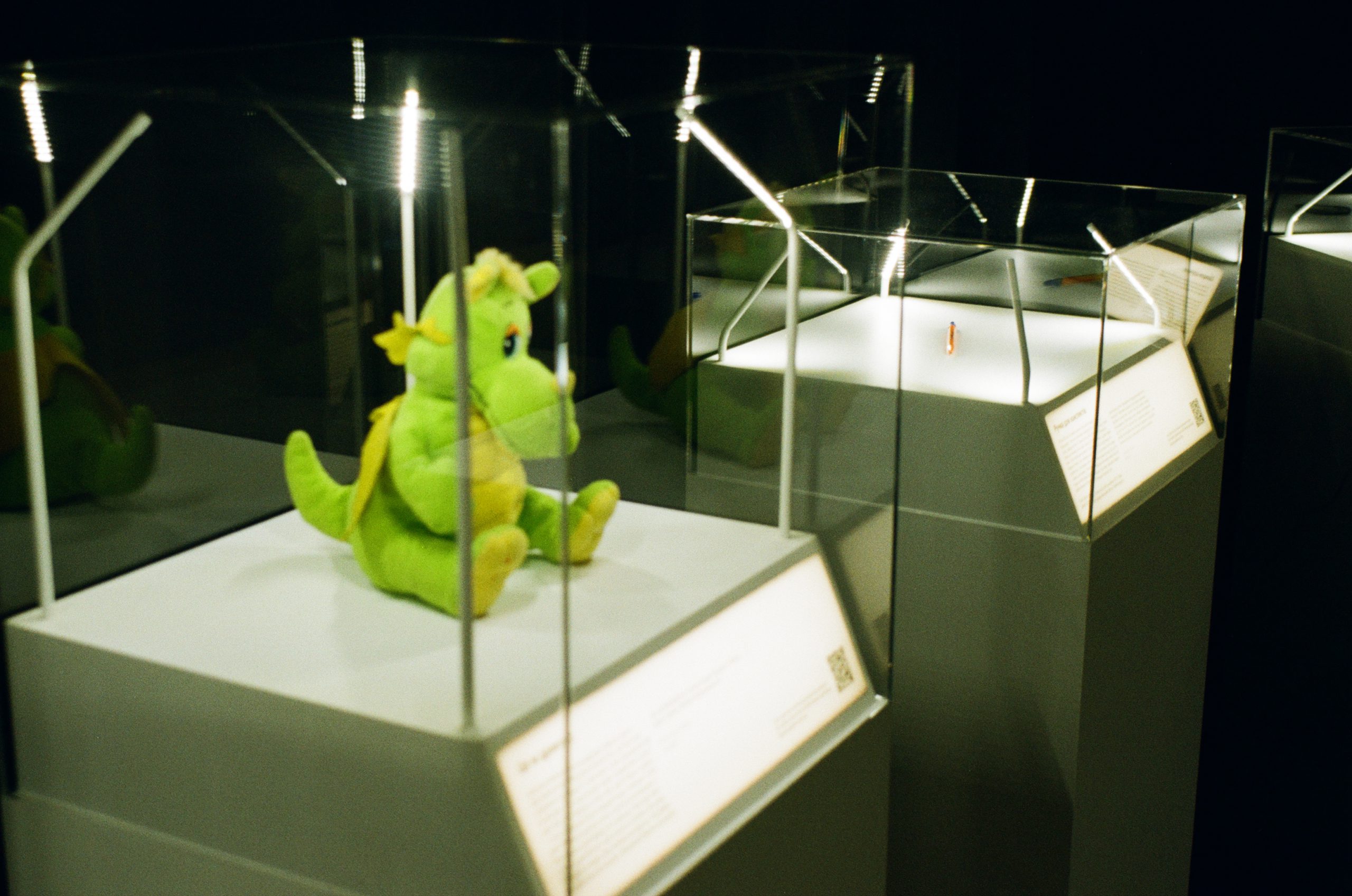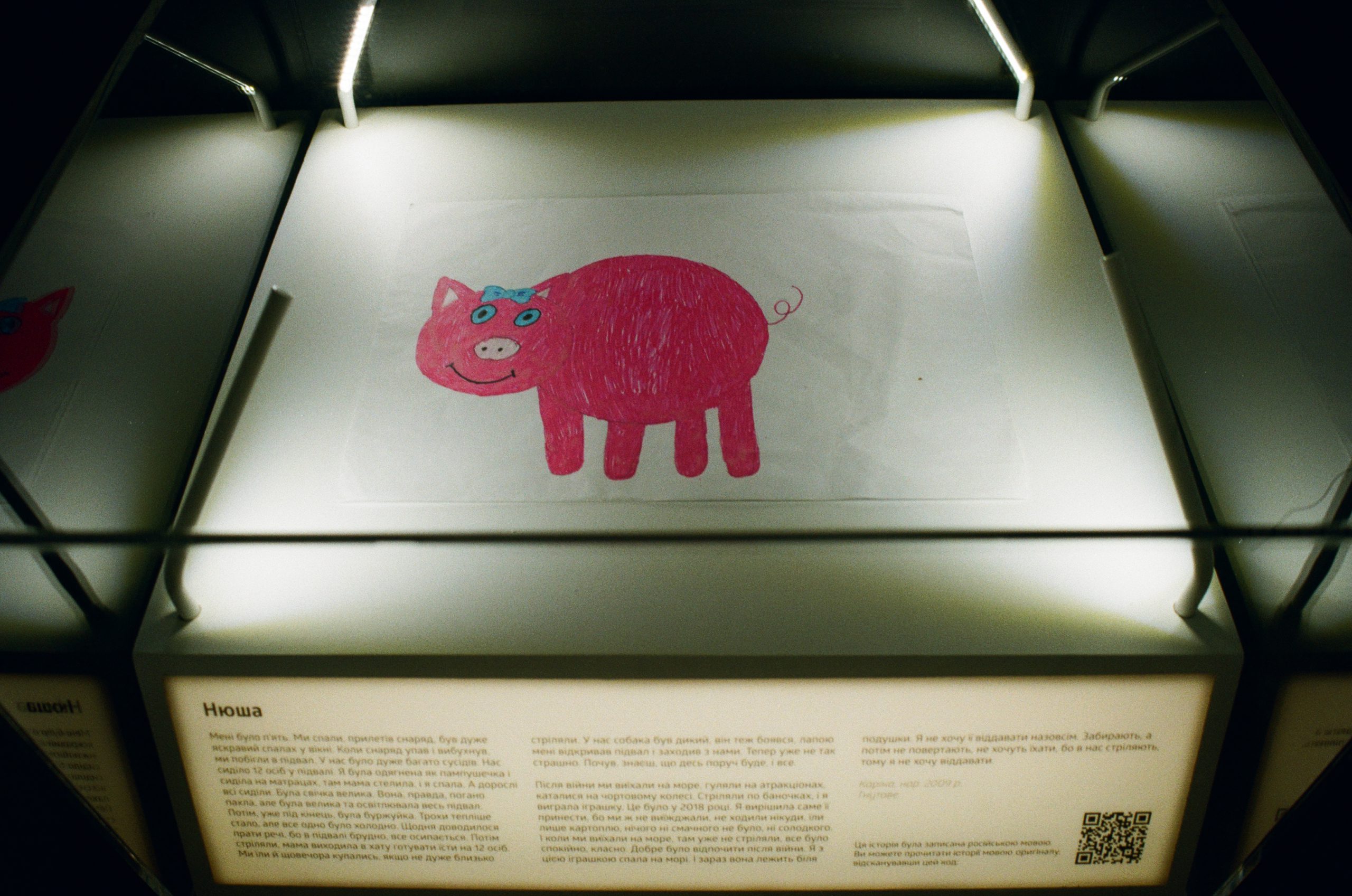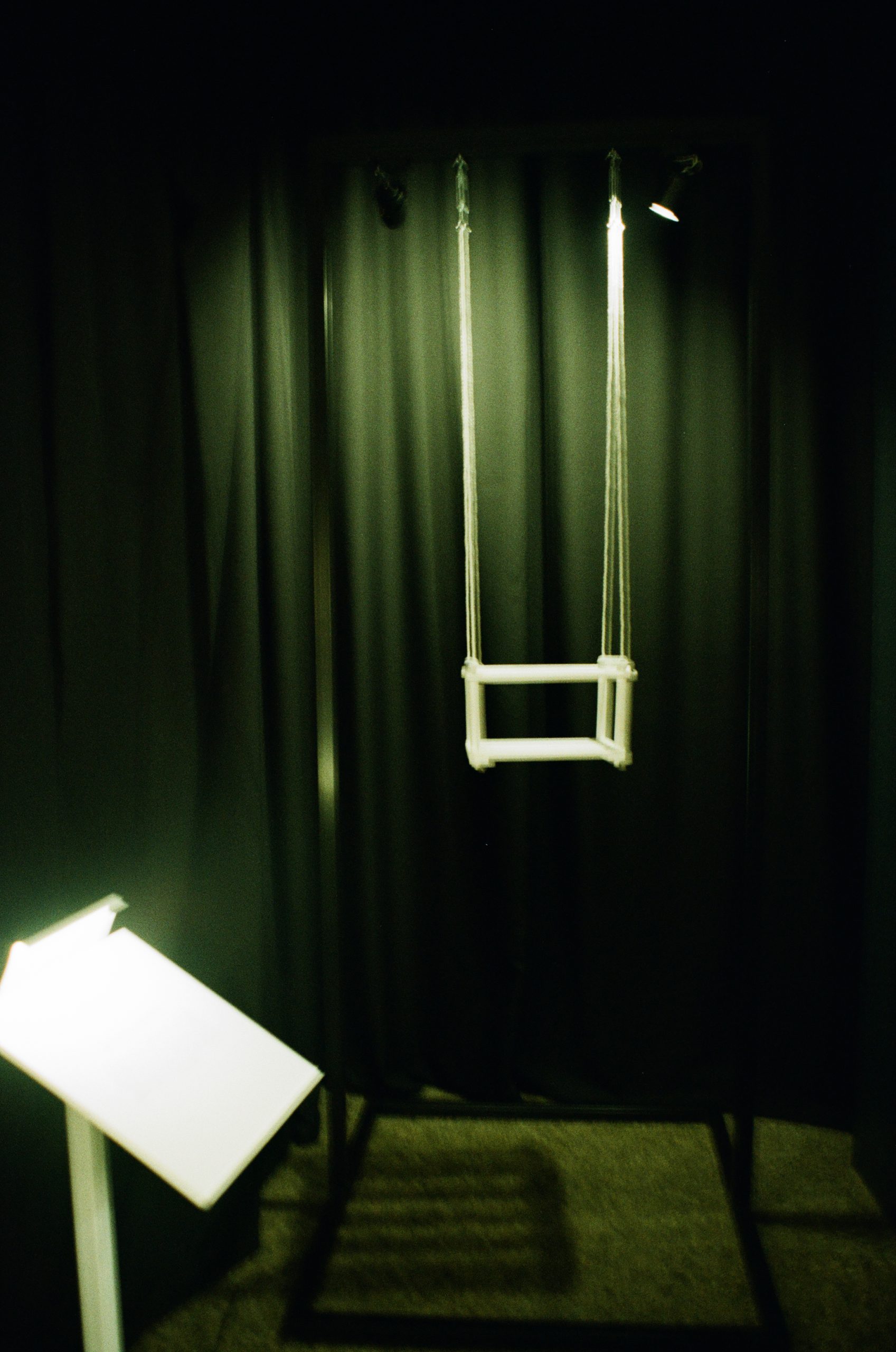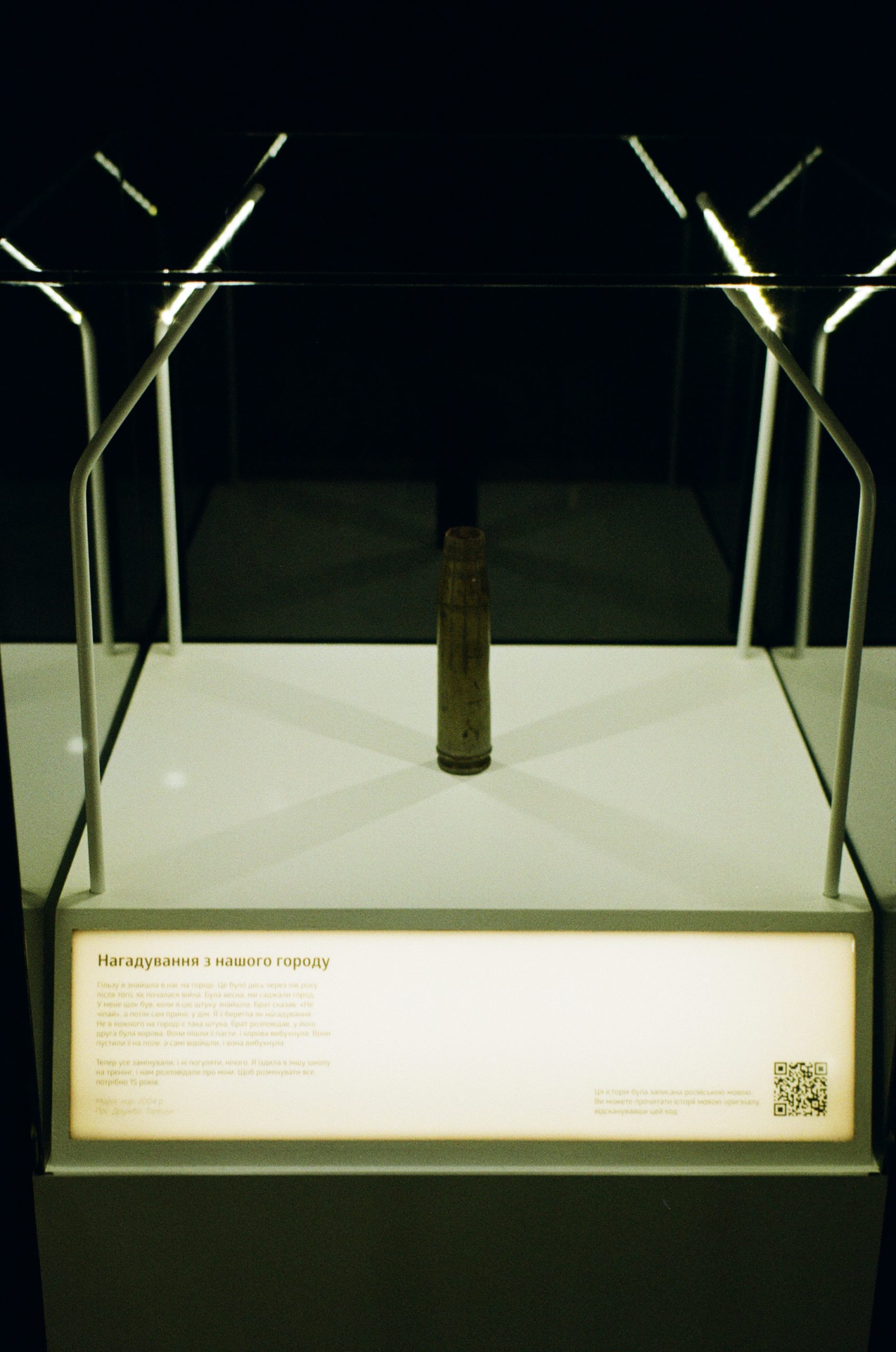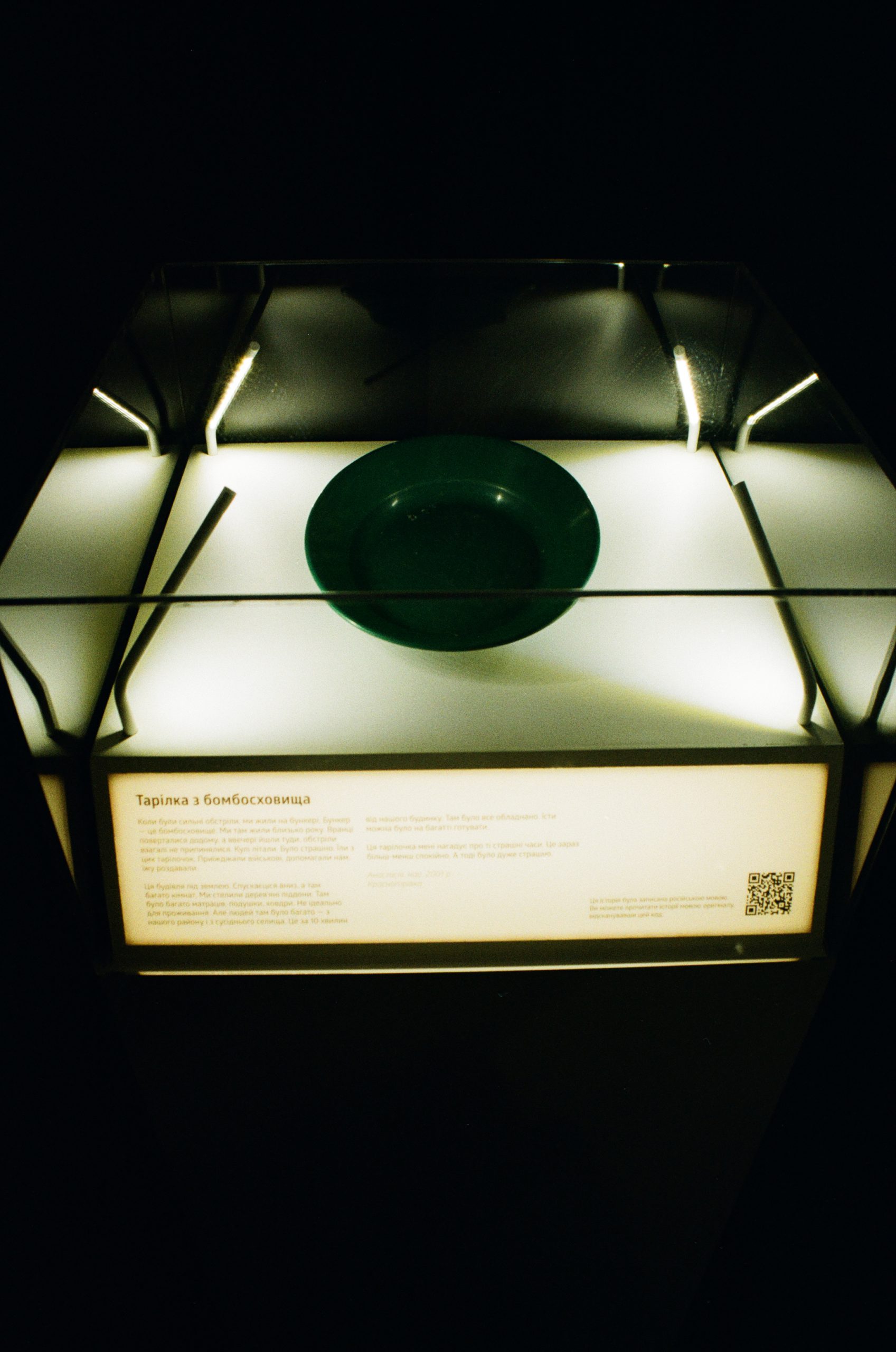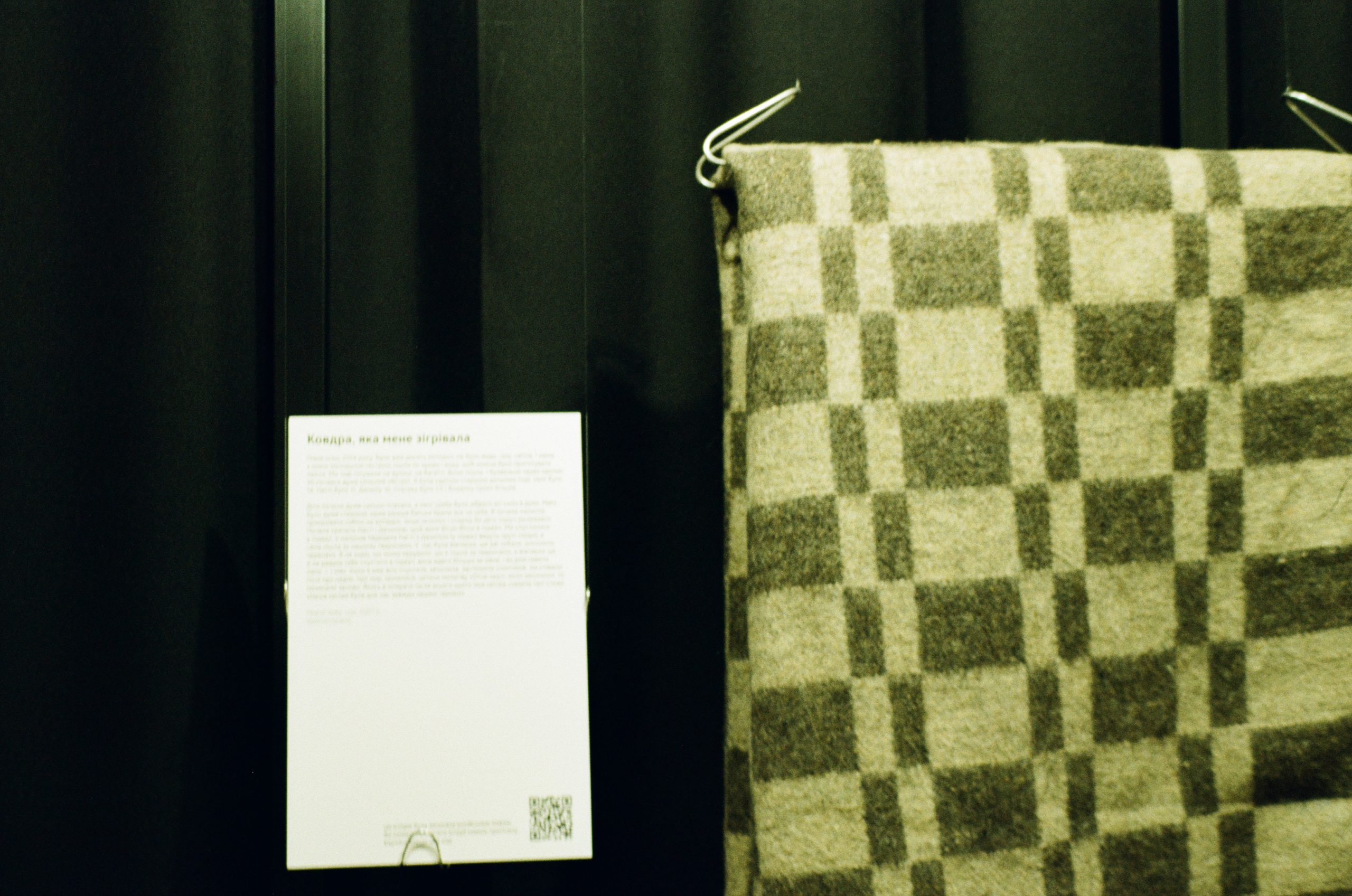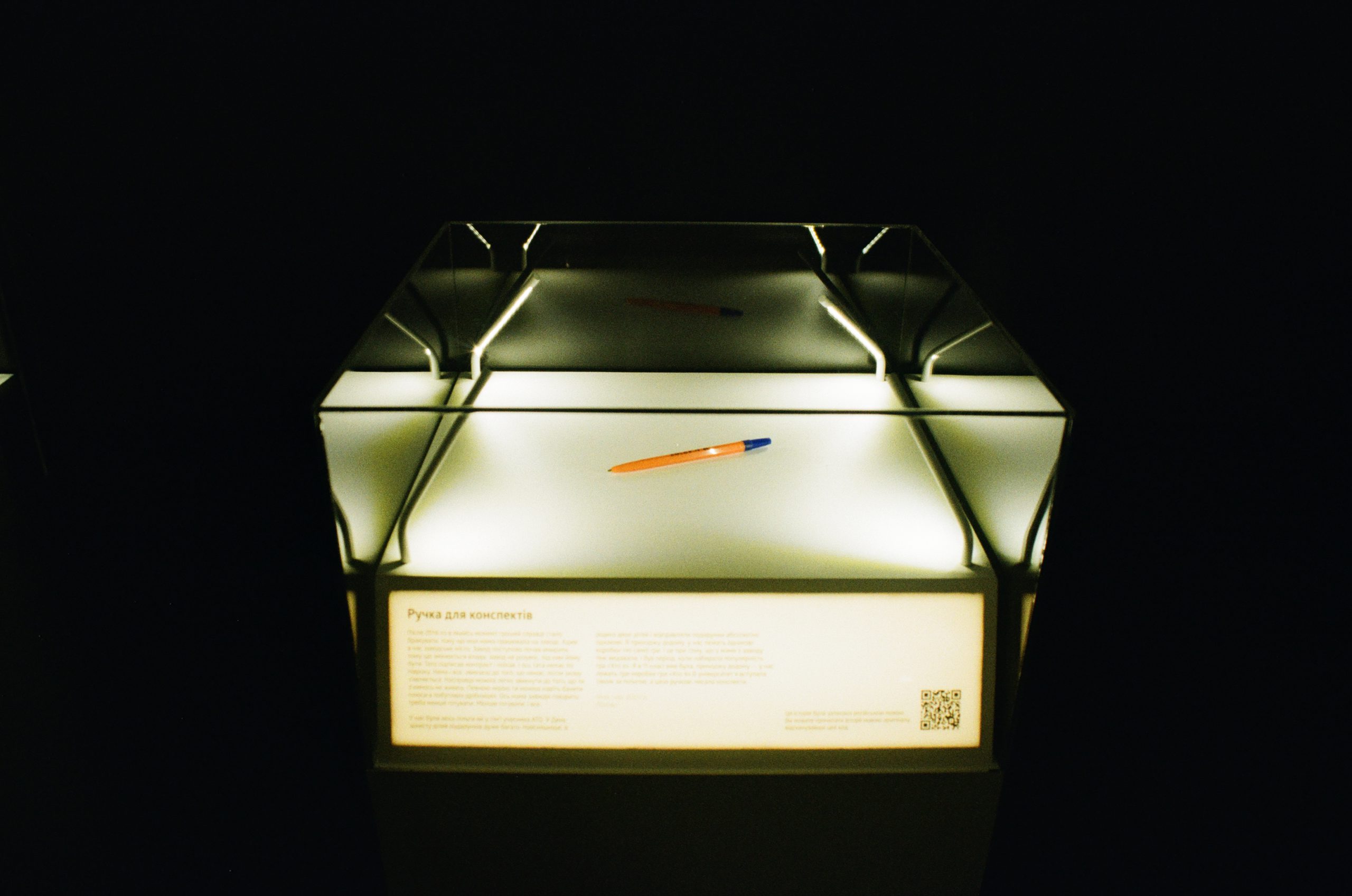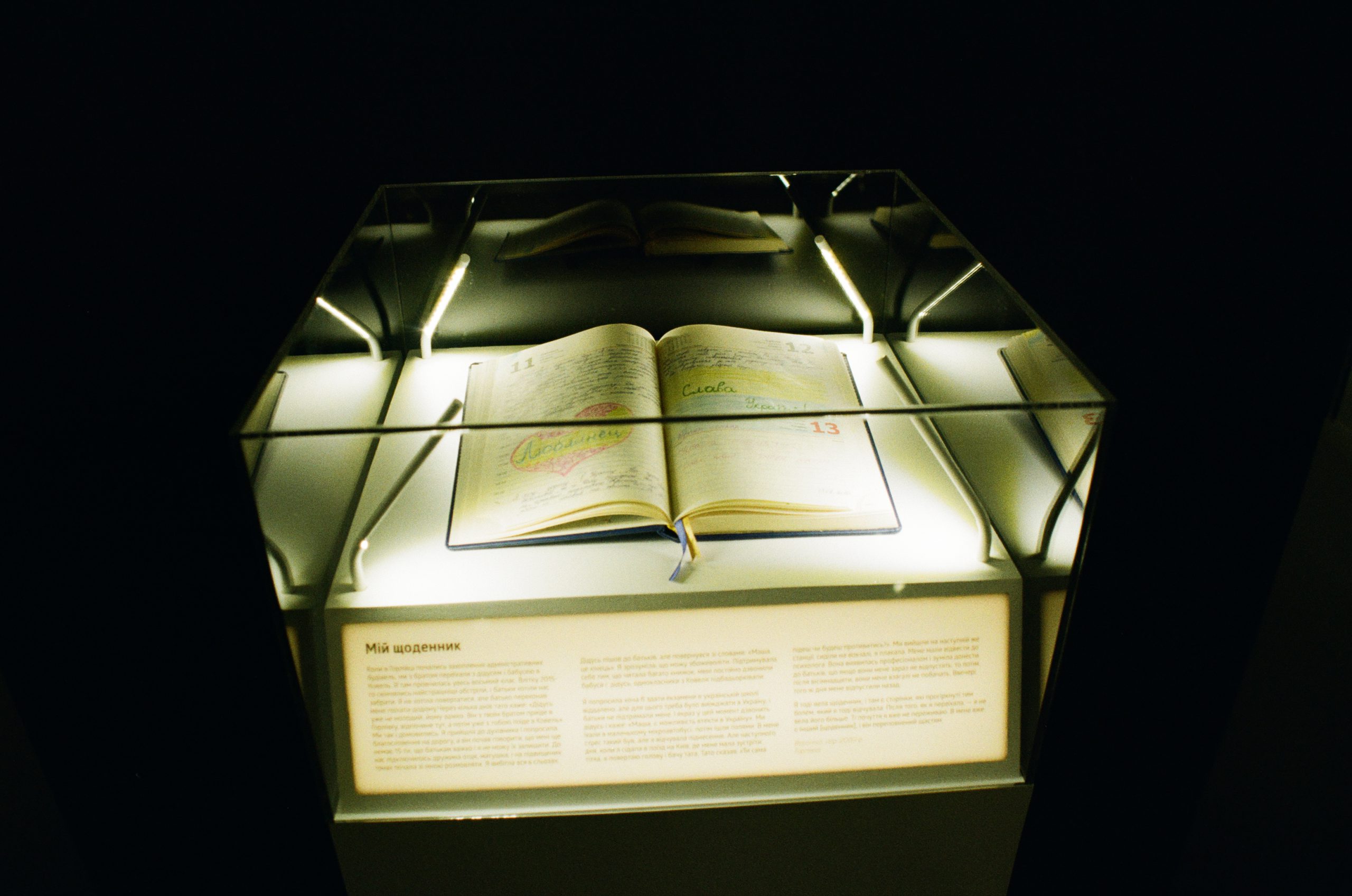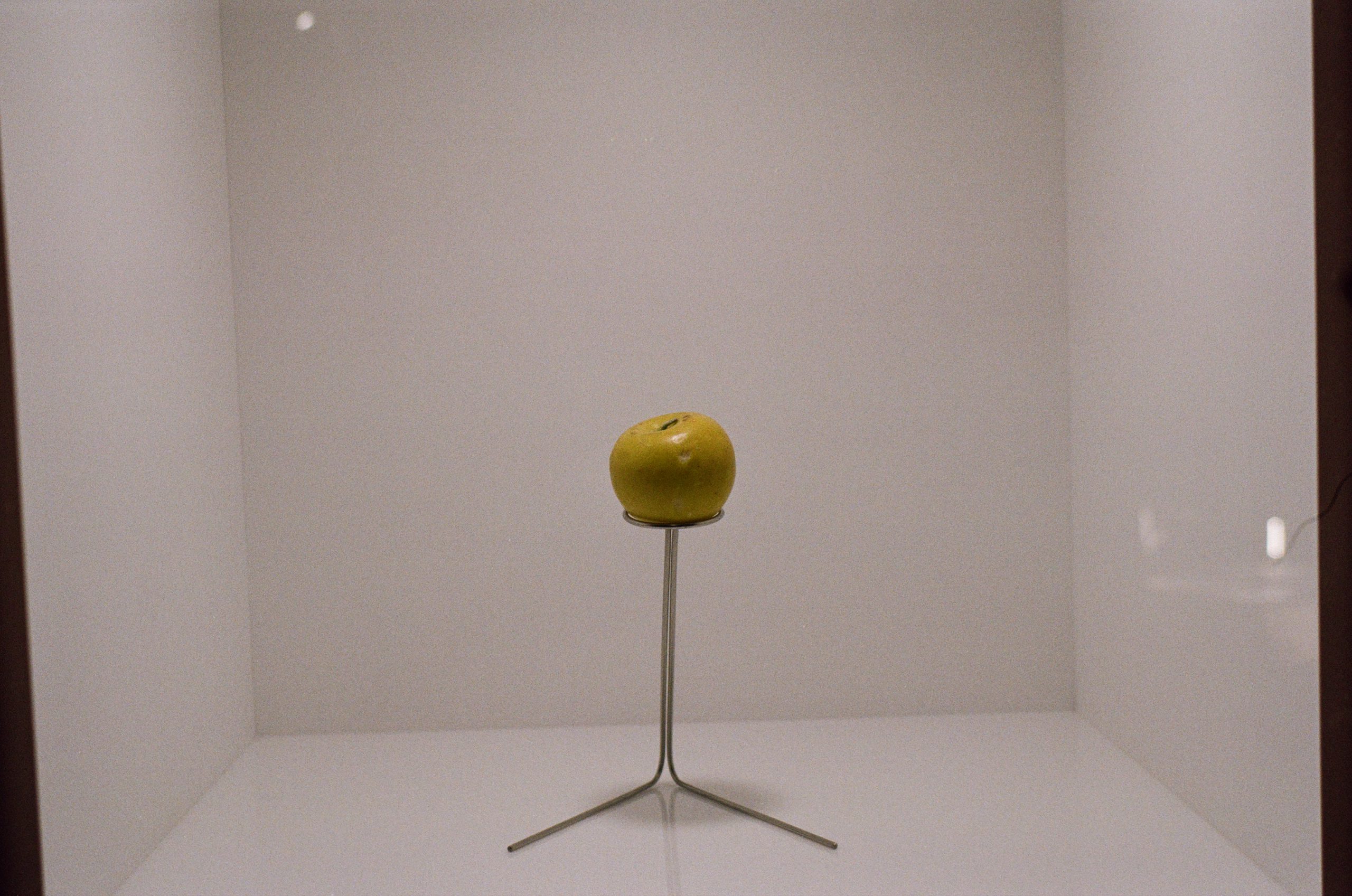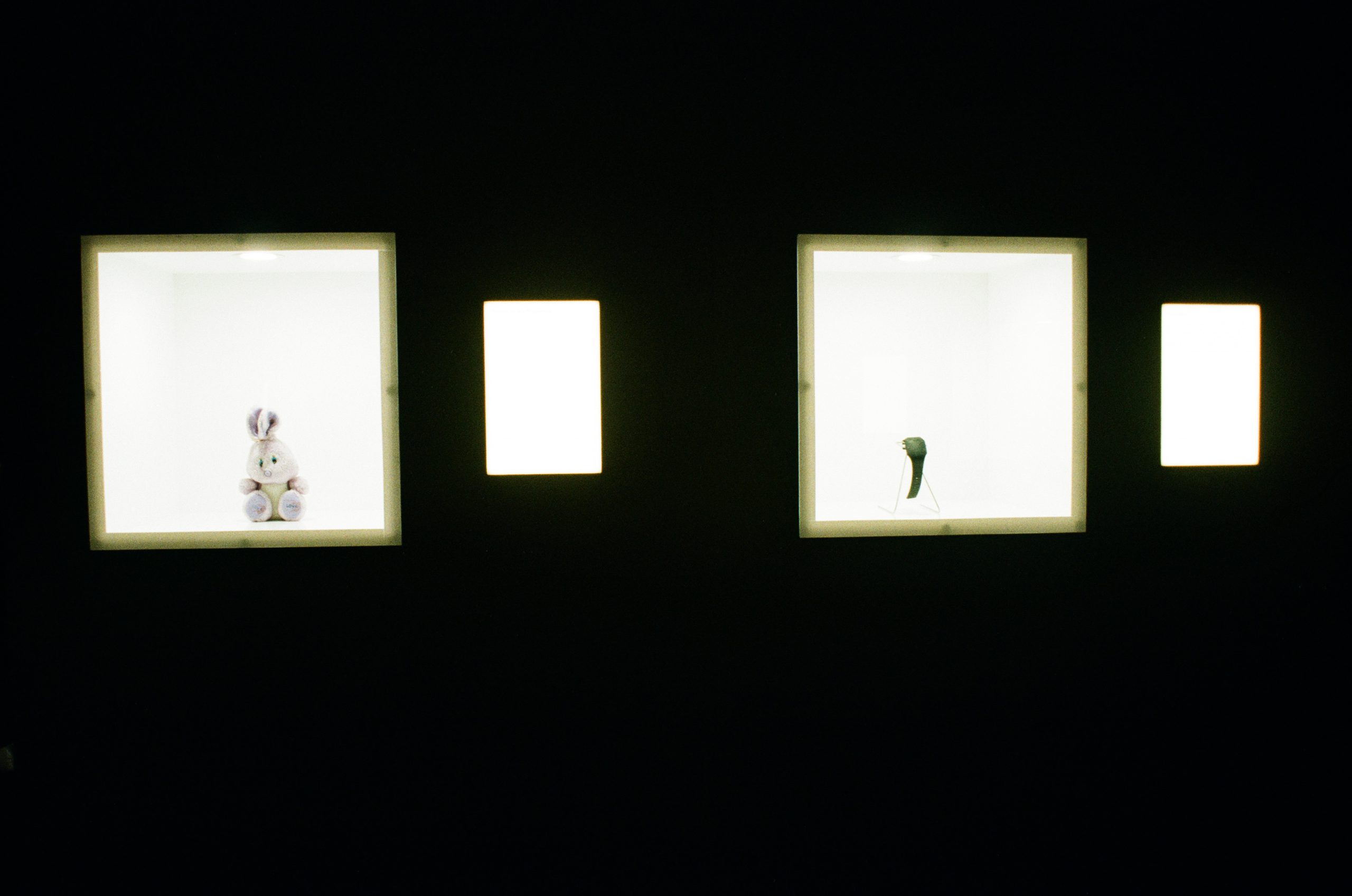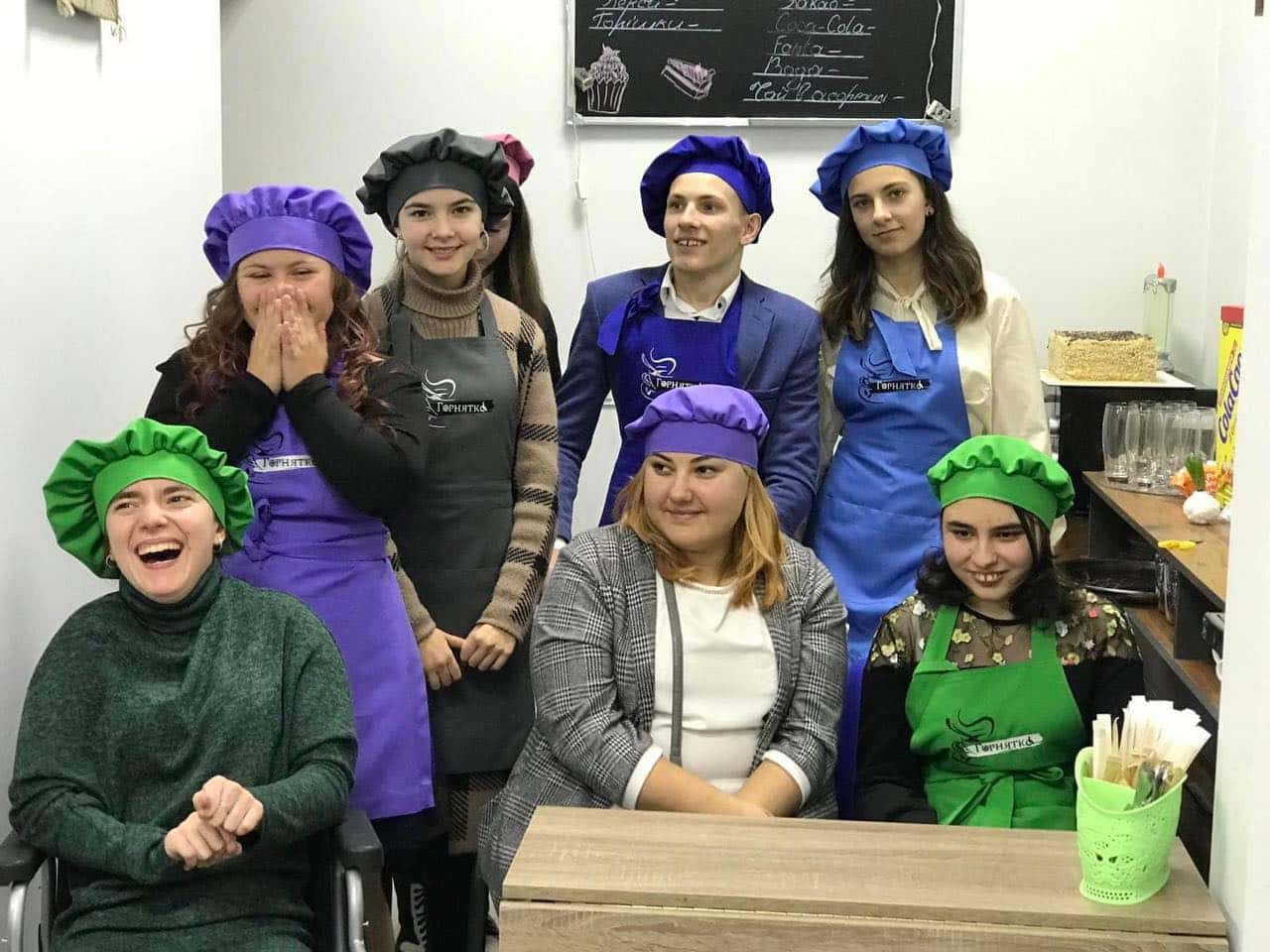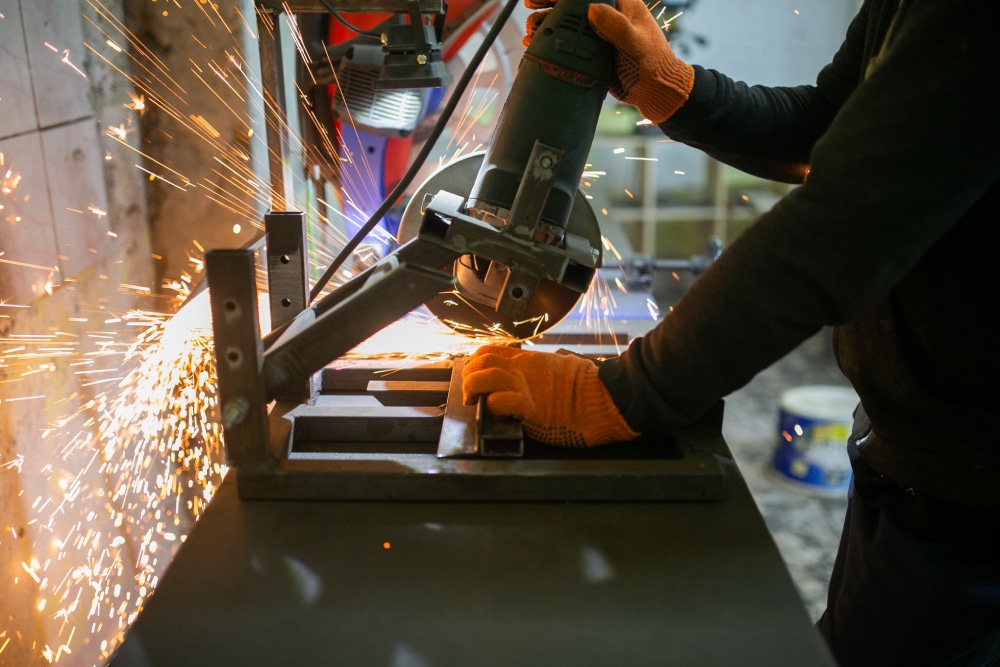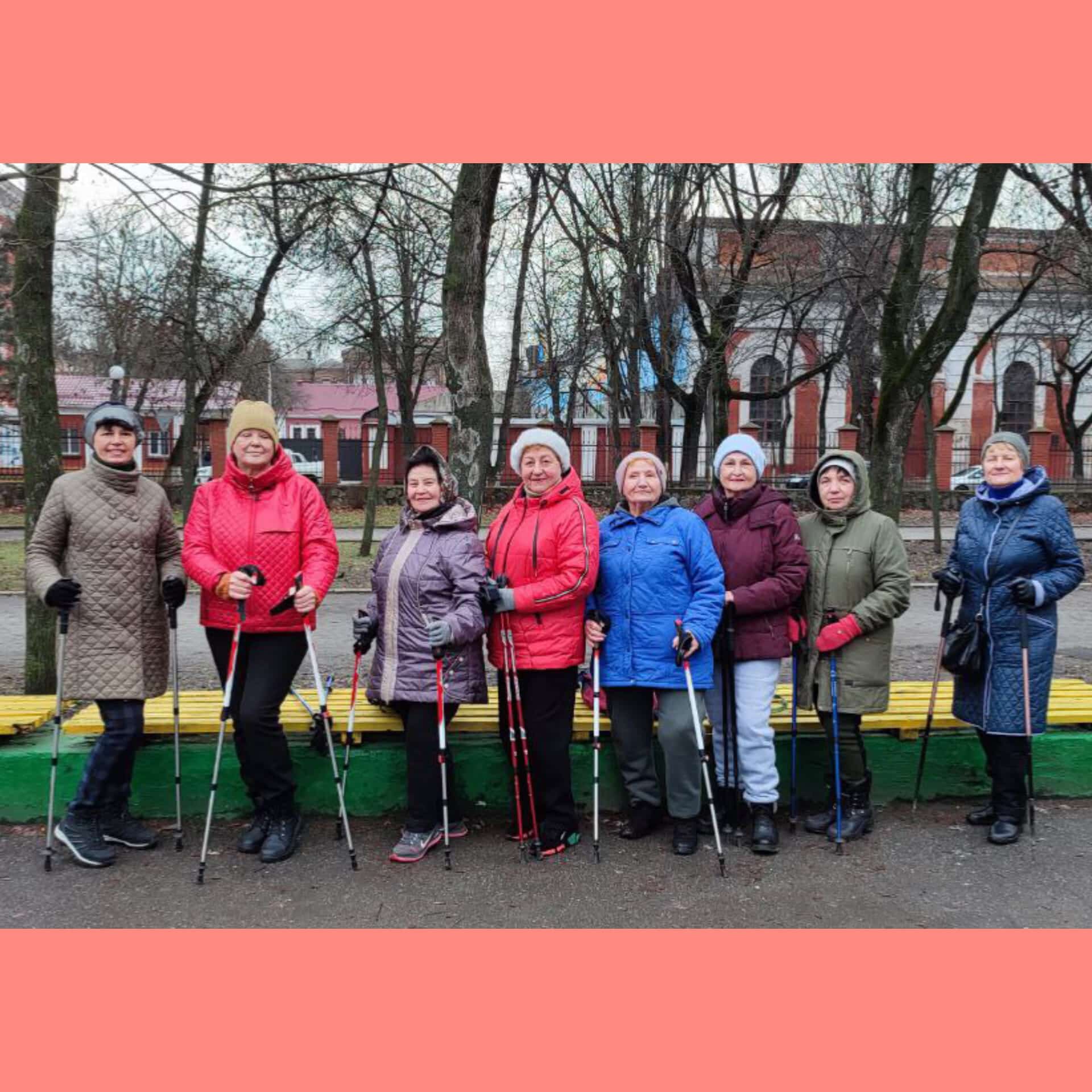The Museum of War Childhood exhibition opened on 23 June at the Museum of History of Kyiv. The project team talked to the children of Donbas and Crimea, retold their stories and showed the objects with which the heroes associate their own military childhood.
The exhibition is open until 12 July. The journalist of Media of Great Stories got to the opening, took some photos, cried, and now shares her impressions with readers.
Start: way too close
When I was offered to talk to the organizers the day before the exhibition, I willingly but a little cautiously agreed. The topic is very close and even traumatic for me, because I am from Donbas. In 2014, when I saw the first tanks, I went on vacation to Kyiv. As you can see, the “vacation” has been going on for 7 years.
However, I was lucky that I was an adult and my personality at that time was already quite developed. And although the first years in Kyiv were not easy, psychologically I was able to work it out. But children are a completely different story. Their world, which was painstakingly built by parents, teachers and society, changed with the outburst of war. Many are already accustomed to such conditions (as far as it is possible), and some still cannot believe what is happening. But, contrary to the conditions, life goes on – children go to school, play with friends, communicate with family, perhaps fall in love for the first time.
Taking the soothing agents and film camera with me, I came to the exhibition before its opening to immediately meet the organizers.
“Olena Rozvadovska, head of the Voices of Children charity foundation that helps children of war, protects their rights and makes their stories heard,” – I was introduced to a tender woman who laughed at a joke a minute ago and easily threw her hair behind her back.
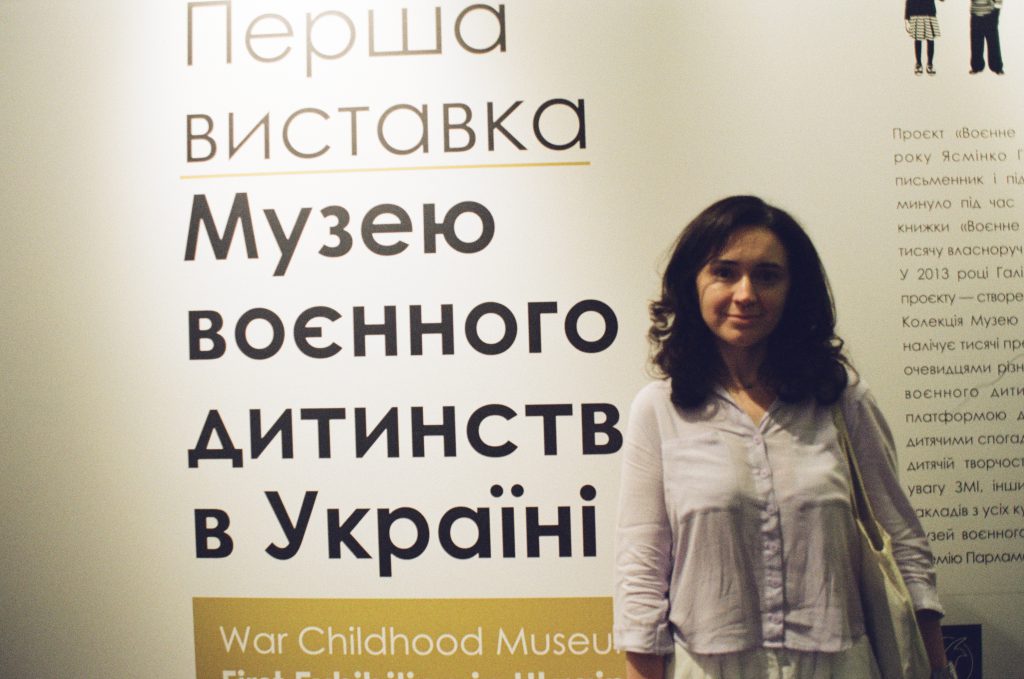
We shook hands, looked into each other’s eyes, and I repeatedly realized how misguiding a person’s appearance may be. While at the first sight, she looked relaxed, her eyes showed up that she went through much trouble.
Olena said that she was the one who collected stories of children from Donbas and objects for the exhibition. Some people were happy to share their belongings and toys, and some did not want to give them away – it was important for children that their favourite dinosaur or bear was around at such times. If a child did not want to give the object, the organizers asked to draw it – such images are also displayed at the exhibition.
While Olena and I were chatting, she revealed many impressive and sometimes terrifying facts. One of them brought tears to her eyes, “I interviewed a girl and asked her how she remembers the life before the war. She stopped at this question and didn’t say anything. I realized that I should ask her age. Seven years old. I was talking to a child who just doesn’t remember the life before the war because she didn’t have one.”
Stories that still hurt
You can be 100% positive that nothing can scare or impress you. but there are things that knock you off your feet. As I walked between the exhibits, people burst into tears to my right and left. A young woman in a cute dress was crying, a tall, stately man in a suit was crying, a 10-year-old girl was crying. I was walking from a toy to a swing, from a pen to a drawing and assuring myself, “You are a professional, stay strong, you have the job to do here.” However, the exhibition did not leave anyone indifferent.
There are not so many objects presented in the museum – about 40, but each of them has a story behind that is difficult to pass. For example, a racket for table tennis, which the boy played with his grandfather (grandfather died during the war). The first toy that the girl received on Ukraine-controlled territory when the family managed to move from the so-called “DNR.” The sleeve that the brother and sister found in their own garden. A blanket that covered the children in the basement during the shelling.
The story that opened my eyes, and probably the eyes of many other visitors:
“Late autumn of 2014. It was quite cold, there was no water, gas and electricity. My mom and younger sister went out for firewood and water to cook food. We then cooked on the street, on the fire. Literally half an hour after they left, heavy shelling began. I was the only older child then, I was 14, Nastia was 11, Danylo, 10, little Stas, one year and a half, and Vladyk was a little older.
The children began to cry a lot, and I had to take myself in hand. It was very scary, because my parents used to take care of everything. I began to cover the kids in case the shell exploded somewhere nearby. I shouted to Nastia and Danylo to run to the basement. When we went down, I passed the kids to Nastia and Danylo (we had a steep staircase leading to the basement), and I ran for the animals. We had a shepherd, two more dogs, a chinchilla, a turtle. I don’t know what guided me when I ran to rescue them – the shepherd still wouldn’t let himself down in the basement. When I let everyone down, closed them, calmed the boys, we sang a song about hope, peace, read the Lord’s Prayer, and then again. In an interview after all this, my sister said, “Our sister has always been a hero to us.”
This story was told by Myroslava from Krasnohorivka (Donetsk region), who was born in 2001. She was also present at the exhibition and could not contain her emotions when she looked at the blanket and tried to give interviews to TV channels. “I thought it didn’t hurt anymore,” I clearly caught what she was saying.
Here are some more stories:
“This dog saved my life. I managed to pick up this toy when we moved. Once I washed it and hung it to dry. At that moment, a mine fell nearby. I was just on my way to it to check it, and it was hit by a bullet. Now the hole is not visible, it was sewn up. I kept it in my room always, but after that incident, I never washed it again,” says Dmytro born in 2002.
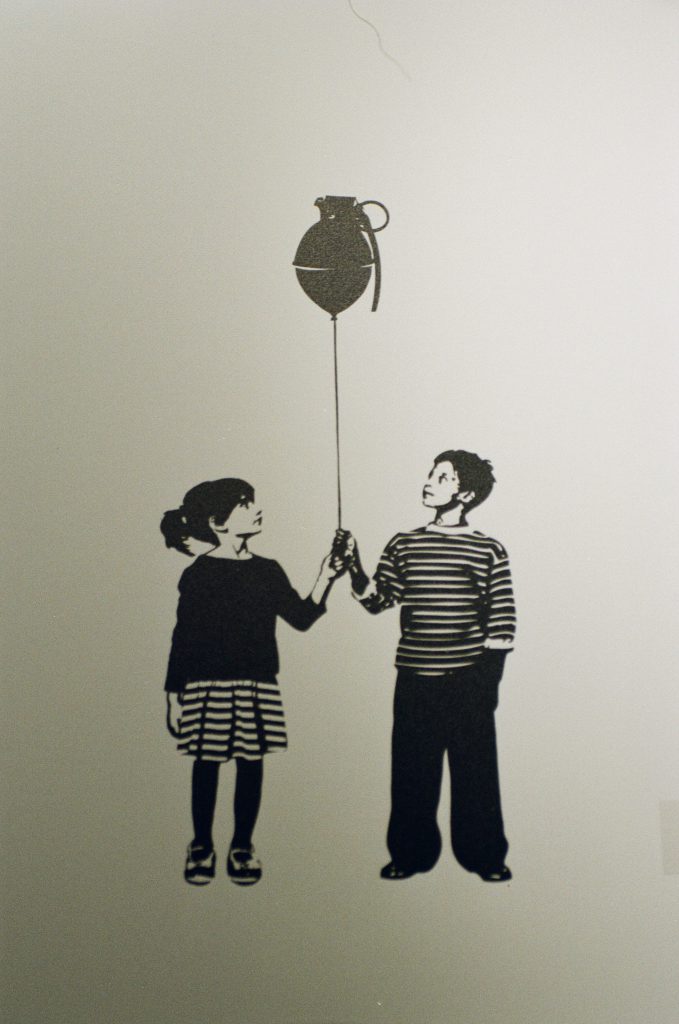
“We were always told at school that the so-called “DPR” is good. We had a course on citizenship. At the beginning of the lesson we had to discuss the news that happened in the last week. We were told about the laws. It was the 6th or 7th grade. We began and ended each music lesson with the anthem of the so-called “DPR.” And we had a compulsory costume and song contest. We marched, we sang. And in the end, we were forced to take an oath. Someone from the military came, and we said: “I serve the Donetsk People’s Republic!” We laughed at that. One boy shouted while we were training, “Glory to Ukraine!” No one understood, because it merged into a rumble. But it cheered us all up.
Once my mother was offered a job in Bakhmut and she moved. She lived alone in a rented apartment for a year. She only came to us on weekends. I told my mother about all these costume and song contests that were happening. And my mother said, “That’s enough, I don’t want it anymore. Move to me. We will be here together.” We picked up a cat, a parrot and arrived. We only took the most necessary things that could fit in the car. I did not take toys with me. And this bunny is the first toy my mother brought me. I love it very much, I keep it. And this is symbolic. I moved and abandoned my past, and this is a symbol of the present,” said Anna, born in 2004 in Bakhmutka (a village in the Donetsk region).
I left the exhibition with the feeling that I was very lucky. Not only me, but everyone who do not live in the occupied territories now, do not hear shots, do not hide in basements, do not experience all these horrors in the modern progressive world. It is incredibly cool that such a museum has been opened – the problem of children living in war zone, their psychological support and their rights will sound louder. However, I wish there were never any reasons to open it.
“How we allowed this to happen?” I asked myself.
About the idea of the museum
Ukraine is not the first country to have such a museum. The idea for the project was born in 2010 by Jasminko Halilovic, a Bosnian writer and entrepreneur who grew up during the 1990s war. For several years, he collected data, memoirs and wrote a book “War Childhood.” The next step was the Museum of War Childhood that opened in 2017 in Sarajevo (Bosnia and Herzegovina) and received the Museum Award of the Parliamentary Assembly of the Council of Europe. After that, the museum became an international platform, as countries such as Serbia, Lebanon and the United States joined, and in 2020, a branch was opened in Kyiv.

Jasminko Halilovic attended the opening in Kyiv. His speech was short but apt, “We want to tell these stories as they deserve it – with dignity and honesty. Take your time looking at objects and reading stories. These children deserve our attention for their courage, resilience, imagination and creativity. We all have something to learn from them.”
What: The first exhibition of the Museum of War Childhood in Ukraine
Where: Museum of the History of Kyiv (7 Bohdana Khmelnytskoho St.)
Ticket price: free of charge

